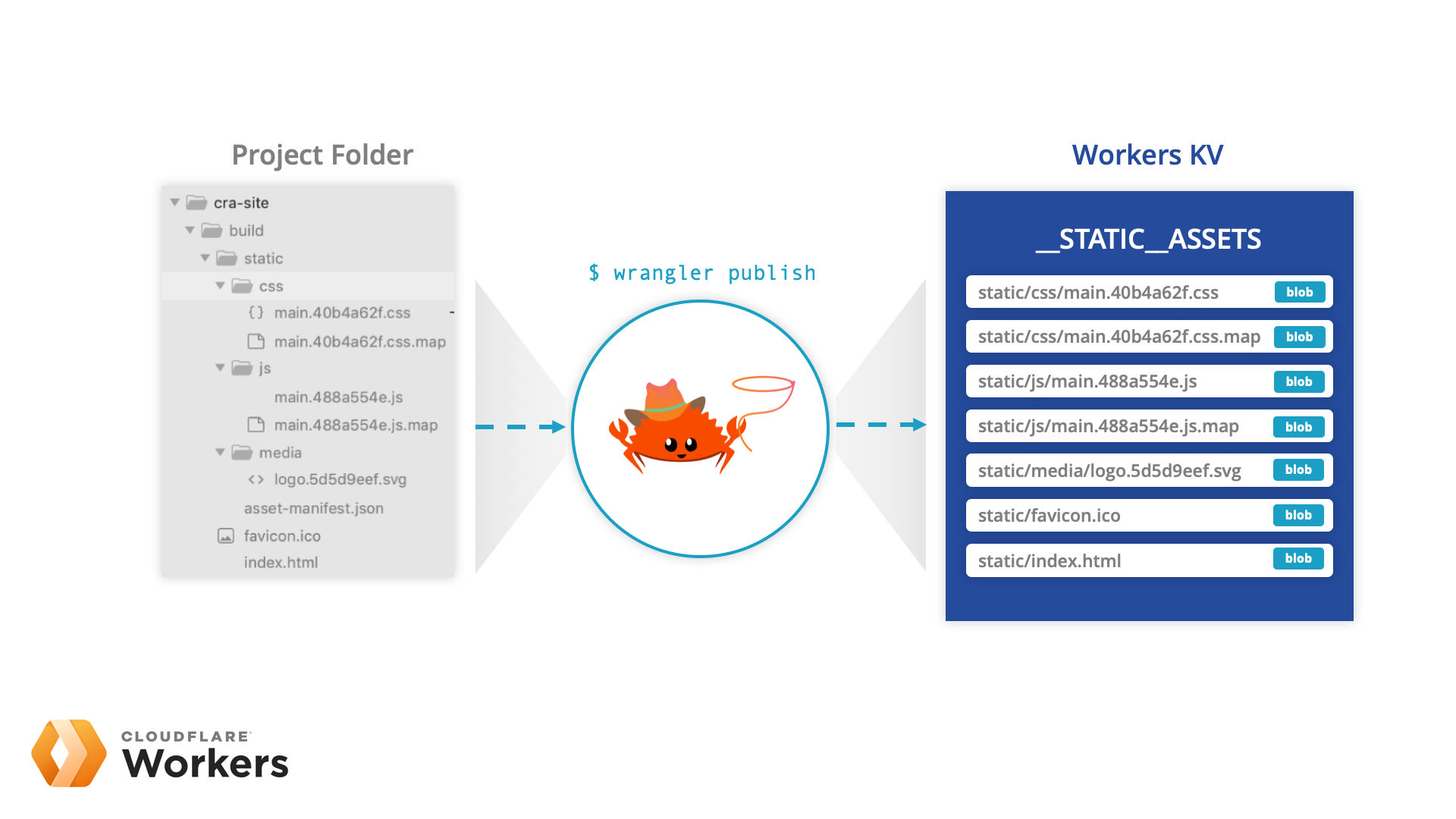Author Archives: Ashley Williams
Author Archives: Ashley Williams

As of today, with the Wrangler CLI, you can now deploy entire websites directly to Cloudflare Workers and Workers KV. If you can statically generate the assets for your site, think create-react-app, Jekyll, or even the WP2Static plugin, you can deploy it to our entire global network, which spans 194 cities in more than 90 countries.
While you could deploy an entire site directly to Workers before, it wasn’t the easiest process. So, the Workers Developer Experience Team came up with a solution to make deploying static assets a significantly better experience.
Using our Workers command-line tool Wrangler, we've made it possible to deploy any static site to Workers in three easy steps: run wrangler init --site, configure the newly created wrangler.toml file with your account and project details, and then publish it to Cloudflare's edge with wrangler publish. If you want to explore how this works, check out our new Workers Sites tutorial for create-react-app, where we cover how this new functionality allows you to deploy without needing to write any additional code!
While in hindsight the path we took to get to this point might not seem the most straightforward, it really highlights the flexibility Continue reading


Today, we're open sourcing and announcing wrangler, a CLI tool for building, previewing, and publishing Rust and WebAssembly Cloudflare Workers.
If that sounds like some word salad to you, that's a reasonable reaction. All three of the technologies involved are relatively new and upcoming: WebAssembly, Rust, and Cloudflare Workers.
Cloudflare's mission is to help build a better Internet. We see Workers as an extension of the already incredibly powerful Web Platform, where JavaScript has allowed users to go from building small bits of interactivity, to building full applications. Node.js first extended this from the client to the server- unifying web application development around a single language – JavaScript. By choosing to use V8 isolates (the technology that powers both Node.js and the most popular browser, Chrome), we sought to make its Workers product a fully compatible, new platform for the Web, eliding the distinction between server and client. By leveraging its large global network of servers, Workers allows users to run code as close as possible to end users, eliminating the latency associated server-side logic or large client-side bundles.
But not everyone wants to write Continue reading